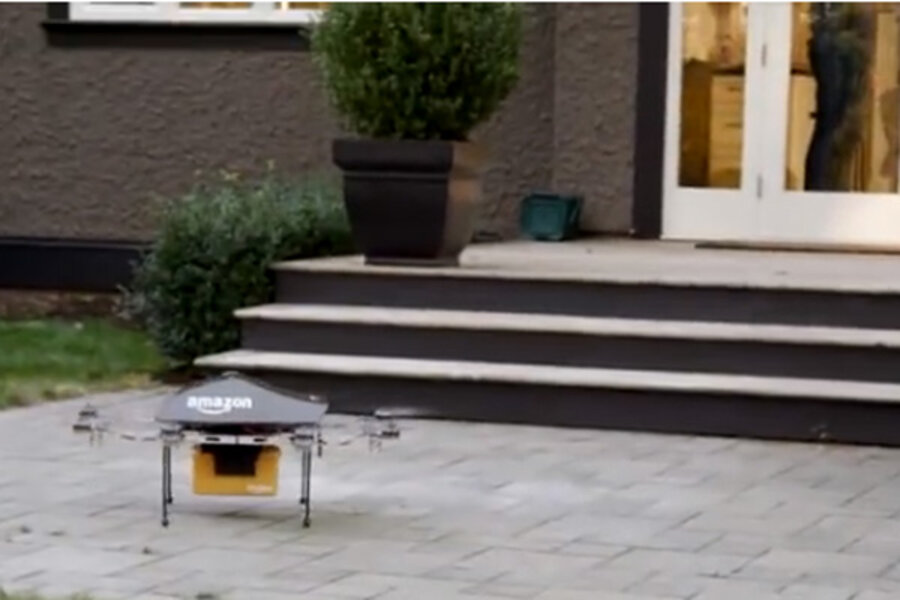Rise of the commercial drone: It's a bird! It's a plane! It's a ... pizza?
Loading...
Last year, a Domino's Pizza franchise in Britain unveiled its "DomiCopter," an aerial drone designed to deliver pizza. The remote-controlled helicopter can carry two large pepperoni pizzas four miles in about 10 minutes.
The pizzeria won't say if these airborne deliveries are anything more than a publicity stunt. "You will have to just wait and see," says T + Biscuits, the British creative agency behind the campaign.
While the technology works, regulations will likely keep the DomiCopter a (pizza) pie-in-the-sky idea, at least for now. But several groups from Amazon to police departments have found other nonmilitary applications for unmanned aircraft.
Domino's got its miniature helicopter from AeroSight. The British film company uses drones to pull off aerial shots in tighter spots than a real helicopter could manage. AeroSight's résumé includes news coverage, music videos, and the upcoming movie "Alan Partridge: Alpha Papa," in theaters this month.
Here in the States, the TacoCopter promised to fly food throughout the San Francisco area. Alas, the idea never got off the ground. And the deliveries most likely would have been illegal.
The Federal Aviation Administration (FAA) prohibits using unmanned aircraft for commercial purposes. Companies can apply for waivers and "experimental airworthiness certificates," but these licenses are reportedly difficult to obtain.
The FAA has no qualms with people launching unmanned aircraft for personal use, however, as long as they stick to a few rules: Stay within 400 feet of the ground. Keep away from populated areas. And avoid real planes.
So long as people follow those guidelines, the FAA does not limit the size of recreational aircraft, giving rise to a growing community of weekend drone pilots.
Chris Anderson, who edited Wired for more than a decade, left the magazine in 2012 to focus his attention on the company he started, 3D Robotics, which designs, builds, and sells parts for unmanned aerial vehicles. Its online store features multi-propeller helicopters, much like the DomiCopter, as well as do-it-yourself kits for sensors, autopilot systems, satellite-positioning chips, and wireless video transmitters.
All this access to high-tech toys has raised fears about privacy, both from the government and neighbors. Last year, Virginia imposed a two-year moratorium on the use of drones by state and local officials, giving lawmakers time to consider reasonable rules before the technology flies right by them.





